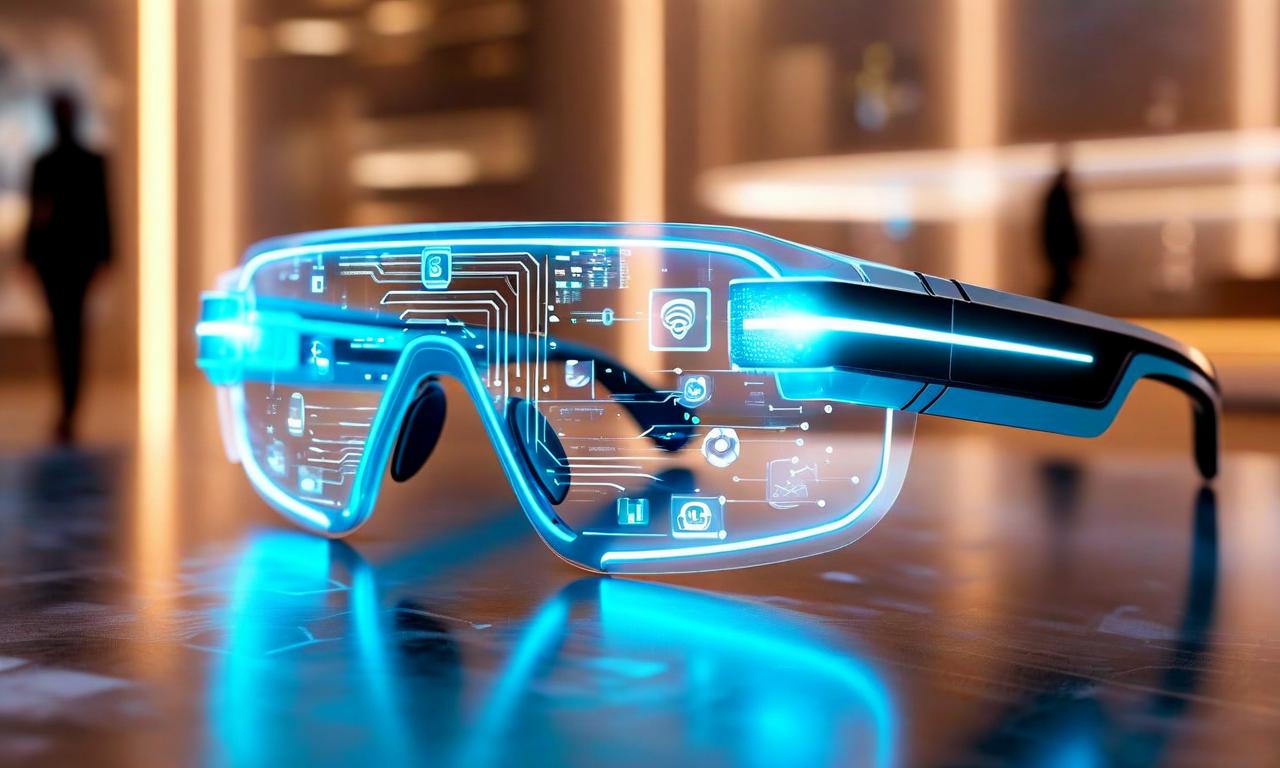Apple Shifts Focus to Smart Glasses and iPhone Fold as OpenAI Emerges as 'First Real Competitor'
Apple is pivoting its AR/VR strategy, abandoning plans for a cheaper 'Vision Air' headset and focusing on smart glasses development, targeting a 2027 release. The company is also progressing on its first foldable iPhone, expected in 2026, with potential cost reductions in hinge components. Meanwhile, Apple faces new competition in AI, with former CEO John Sculley highlighting the company's lag behind competitors like OpenAI and Google in AI innovation.

*this image is generated using AI for illustrative purposes only.
Apple, the tech giant known for its innovative products, is making strategic pivots in its augmented reality (AR), virtual reality (VR), and foldable device efforts, while facing new competition in the AI space. The company has reportedly abandoned plans for a more affordable 'Vision Air' headset and is now concentrating on developing smart glasses, while also working on its first foldable iPhone.
Vision Pro Challenges
The Vision Pro, Apple's high-end mixed reality headset priced at $3,499, has faced adoption hurdles due to several factors:
| Factor | Impact |
|---|---|
| Weight | Comfort concerns for users |
| Cost | Limited accessibility for average consumers |
| Appeal | Niche market interest |
These challenges have resulted in estimated sales falling below one million units, despite Apple's substantial investment—potentially up to $33 billion—in the technology's development.
Shifting Gears to Smart Glasses
In response to these challenges, Apple's engineering team has identified smart glasses as a more viable product for mass-market adoption. The new direction aims to:
- Integrate seamlessly with iPhones
- Run a lighter version of visionOS
- Potentially reach a broader consumer base
Timeline and Development Plans
Apple's roadmap for smart glasses development includes:
- Unveiling as early as next year
- Targeted release in 2027
- Accelerated development of display-equipped version (originally planned for 2028)
Continued Vision Pro Development
While shifting focus to smart glasses, Apple is not abandoning its Vision Pro line. The company continues to work on:
- A refreshed Vision Pro with faster chips
- Potential full redesign for the premium price tier
Strategic Vision for AR/VR Products
Apple envisions a tiered lineup of vision products:
- Basic smart glasses
- Mid-range options
- High-end headsets
This strategy aims to cater to a wider range of consumers and use cases in the AR/VR market.
iPhone Fold Development
Apple is also making progress on its first foldable device, the iPhone Fold, expected to be unveiled in 2026. Recent reports from analyst Ming-Chi Kuo indicate that the average selling price for the iPhone Fold's hinge component is projected to decrease to $70-$80, down 20% to 35% from previous market estimates of $100-$120.
Key details about the iPhone Fold include:
- Cost reduction due to design improvements and Foxconn's manufacturing efficiencies
- Foxconn and Shin Zu Shing's joint venture holds approximately 65% of Apple's total hinge orders
- Potential for more competitive pricing than the previously expected $1,999
- Expected features:
- 7.8-inch primary inner display
- 5.5-inch outer display
- Titanium construction
- 4.5mm thickness
AI Competition and Challenges
While Apple focuses on AR/VR and foldable devices, it faces new challenges in the artificial intelligence sector. Former Apple CEO John Sculley has stated that OpenAI represents Apple's first real competitor in decades, highlighting Apple's struggles in AI development. Speaking at the Zeta Live conference, Sculley noted that Apple has fallen behind technology companies like OpenAI, Google, Meta, and Amazon in AI innovation and regular product updates.
Sculley cited delayed AI improvements to Siri as evidence of Apple's challenges, revealing that Apple currently uses OpenAI's ChatGPT to handle complex Siri queries and is reportedly considering Google partnerships for future Siri enhancements. He also discussed the collaboration between former Apple designer Jony Ive and OpenAI to develop next-generation AI-powered devices.
Looking ahead, Sculley emphasized that Apple's next CEO must guide the company through a transition from the traditional app-based model to an 'agentic era' where AI agents replace multiple applications, shifting from tool-selling to subscription-based revenue models.
Conclusion
Apple's pivot from the 'Vision Air' to smart glasses, the development of the iPhone Fold, and the emerging AI competition demonstrate the company's adaptability in the face of market realities. As Apple refines its approach, the tech industry and consumers alike will be watching closely to see how the company's vision for the future of AR, VR, foldable devices, and AI unfolds.





























